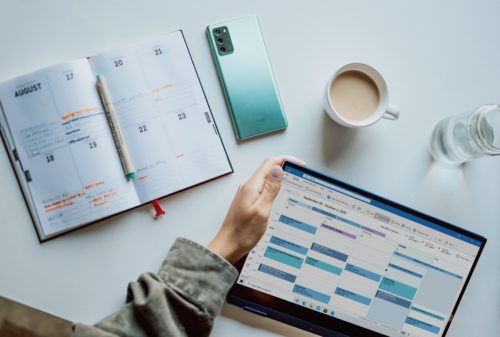
“There are only 24 hours in a day.”
How many times have you heard someone say that? How many times have you said it yourself? It is easy to feel like there are not enough hours in the day. What matters is how you use those hours. Productive people recognize the need to be good time managers, and the best tool for the job is a calendar.
But which calendar? Should you use an app on your phone, a physical notebook, or maybe even a wall calendar?
Ask yourself, “what is the real goal of keeping a calendar?” It is not about counting hours and minutes. The purpose of any productivity system is to help you accomplish more. Calendar management is about the clarity of knowing when and where you are supposed to be and what to do in any given moment. It exists to help you get things done and make the most of your time.
Analog or Digital Calendar?
Some people think better with a pen and paper. Writing something down in a physical notebook is very satisfying to a lot of productive people. If that is you, an analog calendar of some type is your best choice.
The same is true for fans of a digital calendar. I have said before that I “think” better typing than I do writing something down. For those who like me who prefer technology, a digital calendar is the best option. One of our favorites at Asian Efficiency is BusyCal.
Why does it matter which calendar you use? How can you know which system is better?
Here’s how one member of the Dojo, our online productivity community, put it:
I keep wavering between digital and analog calendar and tasks. I love being able to see everything at a glance, but I take public transportation and walk a significant way, so digital makes a lot more sense from the portability standpoint. The problem is that I tend to miss things when they are digital since I’m trying to also not be so distracted. How do other people manage to stay on top of a digital system?
If you’ve tried (or want to try) both approaches but haven’t gotten it quite right yet, this article is for you. Many people find it difficult to find a strategy that works for them at first. You’re definitely not alone.
The good news is we have the benefit of living and breathing this stuff — we spend a huge amount of time researching, experimenting, and listening to our large productivity community to find out what works and what doesn’t.
The truth is that keeping a calendar is not a battle for the last-man-standing. There are advantages to both digital and analog systems. The real winner is a hybrid system that gives you the best of both worlds.
Your calendar is your second-most personal tool, but may be your most important
There are as many ways to use a calendar as there are people who use them. We all have our different calendar setups, routines, and tools.
After a journal, no other productivity tool is as personal. It can contain everything from important events to things we have to do that day, to things we want to do that day.
A calendar can contain birthdays, anniversaries, and reminders of things that are important to us (or things that are important to others, so we look like heroes when “we remember”).
For this reason, many people become attached to the way they use their calendars, but also become curious: is there a “better” way to use a calendar? Those people who are ultra-productive — what do they do?
Want to learn how to rock your calendar?
How you use your calendar is an important question.
Do you have the space to make progress on your important goals? Are you available to spend time with someone that will give you energy?
Managing your calendar is the most effective way to control your time and therefore your productivity.
Here are some resources in which we’ve done deep dives into calendars in the past:
- Here’s an article about how to schedule your priorities by color coding your calendars.
- Here’s a podcast episode where we talk about the 3 simple steps to help you master your calendar.
- Here’s another oldie-but-a-goodie podcast episode about how to use your calendar to be more productive when scheduling and reviewing how you spend your days and weeks.
Benefits of a digital calendar
Technology continues to advance and the features of digital calendars continue to multiply. That translates into many tangible benefits for those who choose digital to organize their days.
1. Always with you
There are many times where I don’t have my backpack with me, but there are almost no times that I don’t have a digital device of some sort.
If my calendar is digital, I always have fast access to see what is going on in the day, and I can quickly add new events.
2. Available on all your devices
If you use a cloud service for your digital calendar, which we recommend, your calendar is available on your phone, your tablet, and your computer. When you put an event in on one of the devices, it appears on all other ones nearly instantaneously.
If by some chance you aren’t at one of your devices, as long as you can get to a web browser, you can get to your calendar.
3. Shareable
With a digital calendar, you can share a calendar with family members or colleagues. It allows you to be on the same page and avoids double-booking or appointment-scheduling-tennis.
Person 1: “How does next Tuesday at 3 work?”
Person 2: “No good. How about Friday at 4?”
Person 1: “Sorry, no. How about the Wednesday after at [5:30]?”
Person 2: “That’s perfect.”
Person 2, the next day: “Ohhh, sorry. It turns out my wife arranged a physio appointment then. How about Thursday at 4? …”
You get the idea. Sharing calendars can eliminate all of that.
4. Recurring events
You can create an event once in your digital calendar, and have it repeat in any number of different frequencies. It makes it much less tedious vs. re-writing the same appointment over and over again.
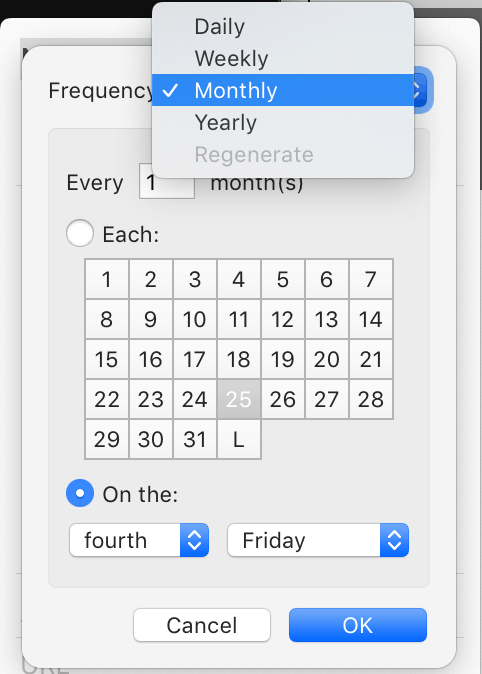
5. Quick capture
Digital calendars allow you to capture events extremely quickly, often right at the point of making them.
Quick capture is a key to avoid missing obligations.
With a few keystrokes or taps, your event is on your calendar and you can then plan the rest of your day and week around it.
Many calendar apps even support natural language input, so creating an event is as easy as typing Lunch with Thanh at Turf N Surf monday at 3pm.
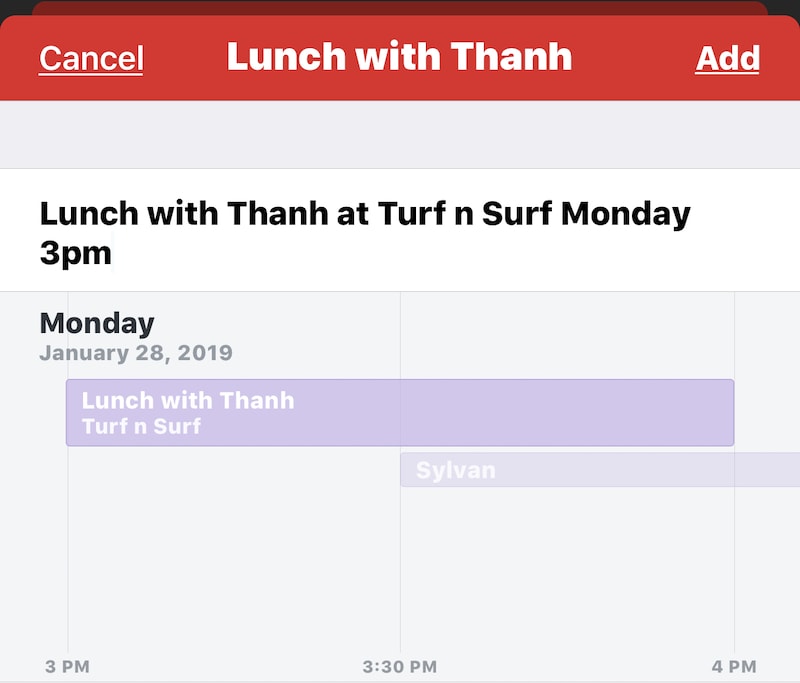
6. Can have links to reference material
With a digital calendar, you can have links to URLs, reference materials, or attached documents right in the calendar entry.
This is hugely effective when scheduling meetings. Everyone has the information that they need to prepare for or participate in the meeting, without having to dig through emails to find what they need.
Benefits of an analog calendar
The popularity of analog organization is making waves in the world of productivity. The Full Focus Planner, Best Self Journal, and the many varieties of Bullet Journal are all popular for a reason. Each of these systems (they are all great options) resonate with how many people think about productivity.
Using an analog calendar can make sense, especially when it is part of a larger analog organizational system.
People who use their analog calendars and planners really tend to love them. While digital calendar users use them for the features, analog calendar users often use them for the experience.
Here are a few benefits of an analog paper calendar:
1. Able to see everything at a glance
With a larger wall calendar or a week-at-a-glance paper planner, it is easier to get a sense of what is going on with one glance. No clicking or scrolling, it is all there.
For example, I have a calendar on the wall behind my computer. I don’t put appointments on it, but because of my system, just this glance up to the wall gives me a lot of information that I use on a day-to-day basis.
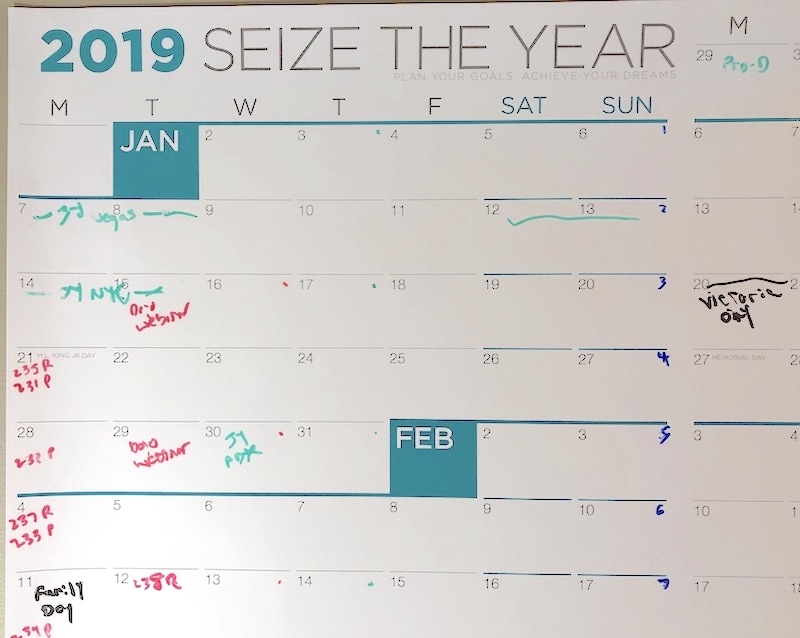
2. Helps you focus
When you use a paper planner, everything you put on the page is intentional, and you (at least subconsciously) decide whether it is something you should be doing or not.
Fans of analog calendars would argue that the lack of recurring appointments is a feature, not a bug. When something is automatically on our calendar, we tend to just go along with it because it is there.
If you have to write the same appointment down every week, you start to question — is this something I should be spending my limited time on?
3. Not distracting
Have you ever gone to look at your calendar on your phone, and a notification comes up or you see an app and decide to tap into it? Half an hour later you forgot what you wanted to look at your calendar for in the first place.
With a paper calendar, no distractions are popping up. It’s just you and the page.
4. Enjoyable
Admittedly this is an intangible benefit, but you often hear from paper calendar proponents that they just like using their system. Here’s a slightly over-the-top example from the Wall Street Journal:
Nowadays, the emotional rush I feel when I open my planner to the current month is the instant “read” I get on my upcoming schedule. I experience a mild euphoria, quite unlike the mixture of anxiety and boredom my desktop work calendar often triggers: The latter’s coldly digital time slots signifying meetings and deadlines don’t satisfy me the way the handcrafted order of my datebook does.
If using analog tools for productivity inspires you, there is an analog productivity course inside The Dojo.
Digital or analog is the wrong question
Which should you use? A digital calendar or an analog calendar? It comes down to personal preference of course, but if you see the benefit of both, then the answer may be… both!
The question is, how do you use them so that they work together, so that nothing is missed, and so that you can use your calendar(s) as a way to support you in meeting your goals?
The Digital Analog Hybrid Calendar System
The solution is to use a hybrid system. A system that takes advantage of the best parts of both digital and analog calendars.
The key is to define one of your calendars, digital or analog, as the definitive Master calendar. You know that everything you need to do or know is on this calendar, and if you were forced just to use one for a period of time, you’d use this one.
We recommend that in a hybrid system, your master calendar be digital.
Master System – Digital
Every event, appointment, focus time block, etc. all go on your digital calendar.
Why? A digital calendar is easy to maintain and update — chances are, you always have a digital device of some sort that you can access when you need to check or update your calendar.
Digital calendar tools
If you are going to use a digital calendar, don’t focus first on which calendar app you want to use.
Instead, start with which cloud service you will use to tie your calendars together.
If you are all-in in the Apple ecosystem, you can use iCloud. If need to be cross-platform, Google Calendar is a good solution that works everywhere.
If you are in an organization, you likely won’t have a choice.
The key is to make sure that you and the people you need to share calendars with are all on the same platform.
Then it’s a matter of choosing how you will interact with the digital calendar.
If you use macOS or iOS, the stock calendar apps are fine, but here are some alternatives:
- Fantastical (iOS/Mac): An excellent calendar app with great natural language support.
- BusyCal (iOS/Mac): Also a great calendar tool that is extremely customizable.
- Google Calendar (Web/Cross-platform): The Google Calendar web interface is good, and the iOS and Android apps are quite good.
- Outlook (Windows/Cross-platform): You either love it, hate it, or have no choice either way. People have a surprising amount of love for the iOS app.
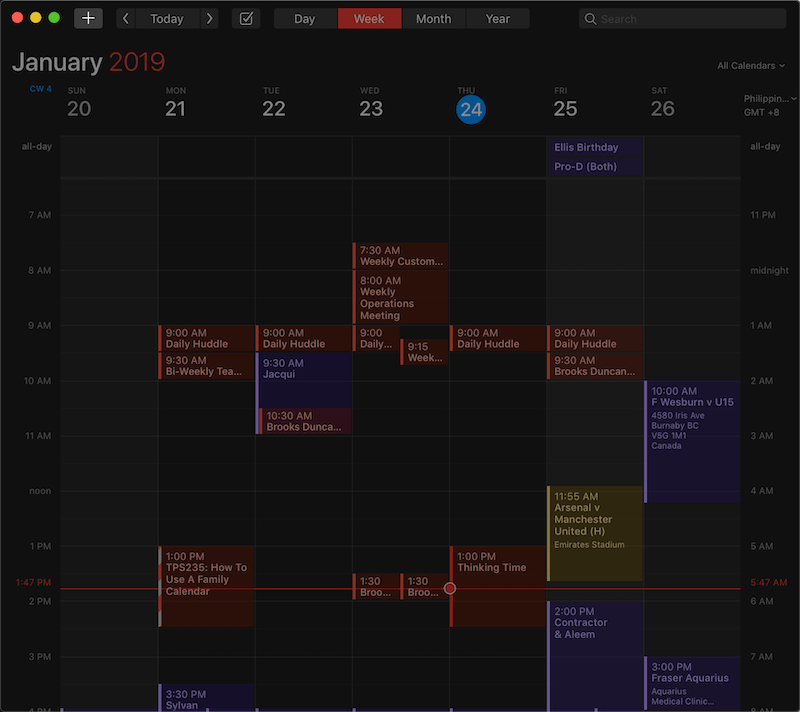
Servant System – Analog
Your “second” calendar is your analog calendar, but that doesn’t mean it is any less useful.
There are many different forms an analog calendar can take. It can be a wall calendar (which I use), a notebook or paper planner, a sheet of paper for the day, or a whiteboard (which I also use).
An analog planner can be especially helpful when paired with thinking time sessions. You can use it to sketch out your week, month, or quarter.
To use an analog calendar as your “servant” calendar, you take the important things from your digital master calendar and place it in your analog calendar for focus.
For example, at the end of each day, you can review your digital calendar and write down the next day’s events in your paper calendar or on a sheet of paper.
Then the next day, you work off that. You have the focus and lack of distraction of a paper calendar, but you know everything is in your digital calendar if you need it.
Analog calendar tools
The tool you use for an analog calendar depends on the type you want to use. Here are some examples:
- Wall calendar: NeuYear: The NeuYear is a large wall calendar that myself and many on the AE team and many in the AE community use. I always have one on the wall behind my computer so that I can see it at a glance.
- Paper planner: Leuchtturm1917: The Leuchtturm planner was the first item in our holiday gift guide for a reason. Many in the AE community love it. There’s a non-planner-specific notebook too if you prefer that.
- Whiteboard: I find 36×24” to be a good size for a weekly planning whiteboard. I prefer blank ones vs. the ones with calendars pre-printed for flexibility, but do whatever works for you.
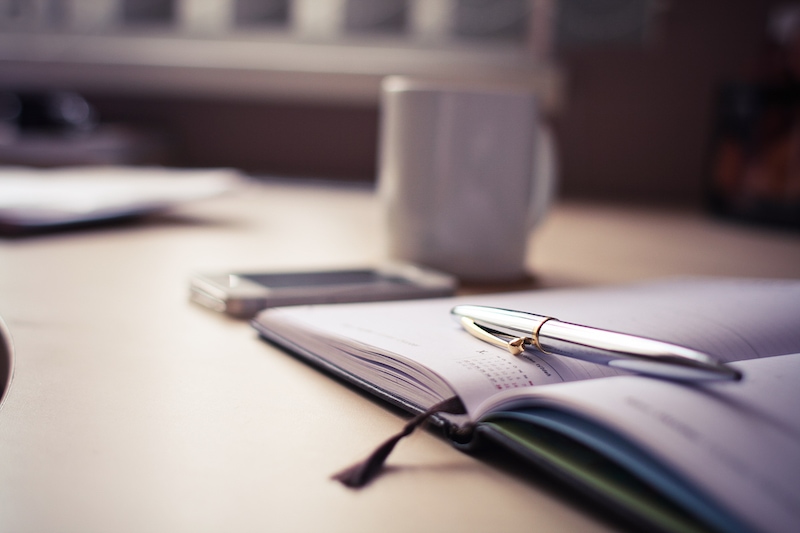
Avoid the biggest mistake people make with a hybrid calendar system
Can you guess what the biggest mistake people make is when using a digital/analog hybrid calendar system?
Allowing the calendars to become out of sync.
This primarily occurs when we jot down appointments, action items, and important notes in the servant (analog) system that don’t make their way back to the master (digital) system.
For a hybrid system to work, there must be one calendar that is canonical. That you trust to have the correct list of appointments and events.
If not, you end up not trusting either system and find you have to check multiple places, which becomes a recipe for overwhelm.
The solution is simple: have a ritual to make sure they are in sync. The easiest way to do this is to tie it into your morning or evening ritual — at the beginning or end of each day, make it a habit to transfer anything relevant between the calendars.
For example, I have a recurring task every day called “Process Notebook.” To me, that means to go through my paper notebook and capture any action items or calendar events.
You can also tie this into your weekly review: do a check through your analog calendar or notebook to see what you need to capture since last week.
Design a calendar system that works for you
In this article, we’ve described a digital and analog hybrid calendar system that allows you to stay focused and know that everything important is captured to your trusted system.
You’ll know what you should be doing when, without being distracted.
This system is one way to do it, but since a calendar system is so personal, you may want to adapt it to your needs. That’s OK!
Implement what works for you, and if after reading this you still want to be all-digital or all-analog, that’s not a problem at all.
Want an unbeatable time management system that will support you and keep you in control of your work and your life? Check out our popular Calendar course inside The Dojo, our online productivity community. Pair that with our digital/analog hybrid system, and you’ll have the confidence and control you need.

I finally had to put a small camera facing my wife’s paper wall calendar to make it available remotely. (Read-only, of course.) But this was an easier path than her letting it go.
Calendar plays an important part in our daily life. There is an analog and digital type of calendar. But most people use the digital calendar nowadays. Because it is easily accessible. There is a different type of digital calendar I use Quick Capture.